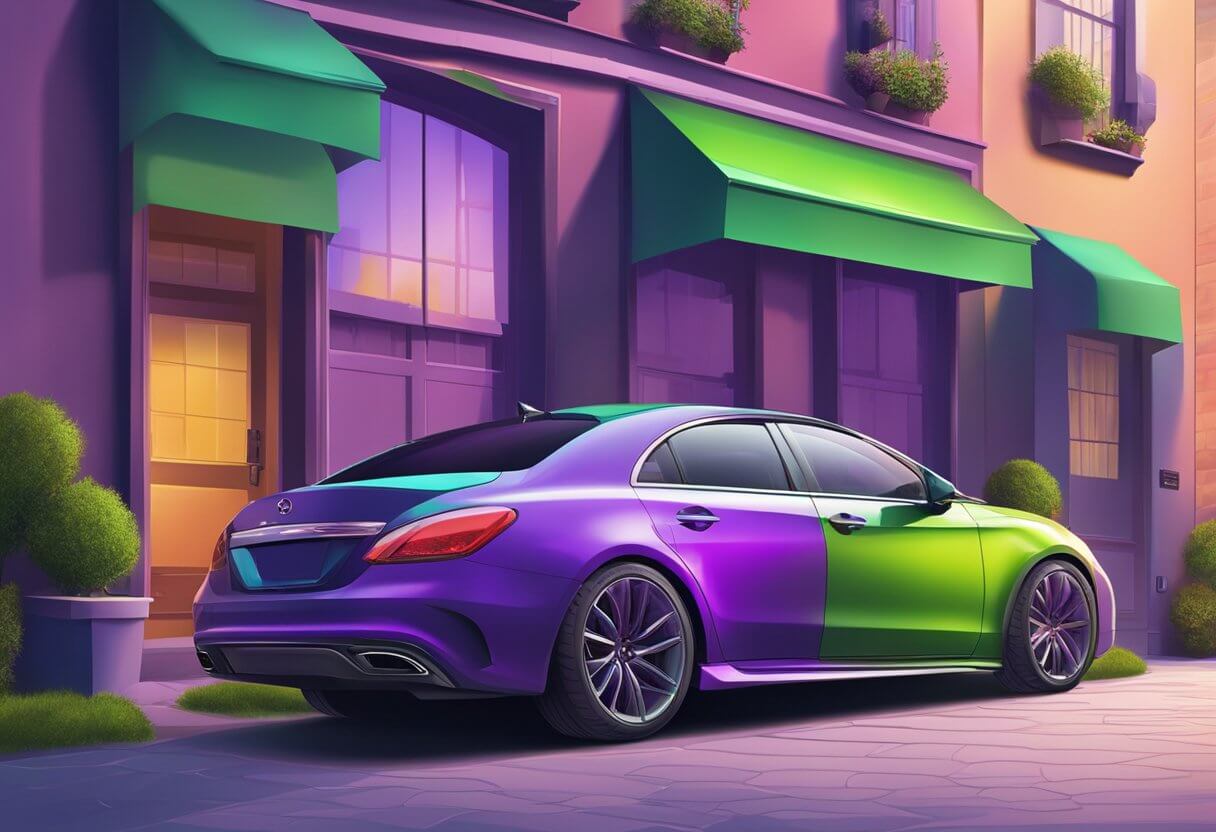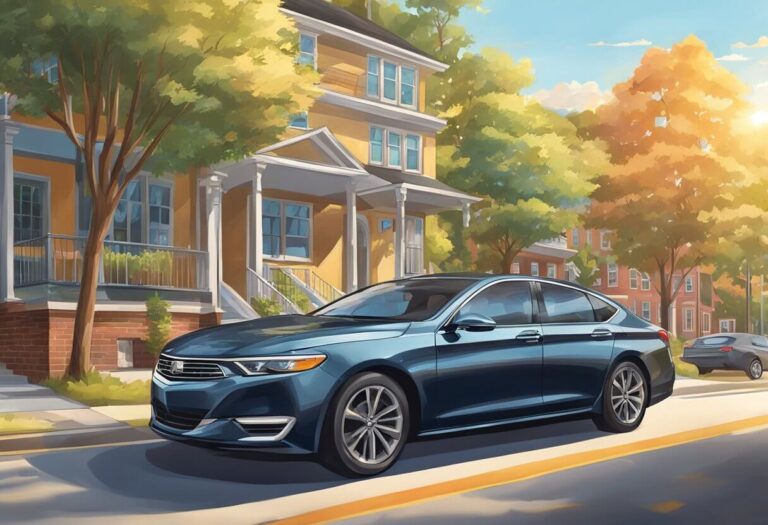Is Chameleon Window Tint Legal? The Complete Guide

Are you wondering if chameleon window tint is legal for your vehicle? This unique tint offers aesthetic benefits and can change colors based on lighting conditions. However, it’s crucial to understand the laws and regulations surrounding its use before installation.
In this comprehensive guide, we’ll explore the legality of chameleon window tint, covering:
- What chameleon tint is and how it works
- An overview of tint laws and visibility requirements
- Specific legality details for the United States, United Kingdom, and other countries
- Safety considerations when using chameleon tint
- Tips for getting legal tint installation and proper maintenance
By the end, you’ll have a clear understanding of whether chameleon tint is legal in your area and what steps to take to ensure compliance. Let’s dive in!
What is Chameleon Window Tint?
Chameleon window tint, also known as color-shifting or photochromic tint, is a unique type of automotive window film. Unlike traditional tints with a solid color, chameleon tint changes hues based on the angle of the light and viewing perspective.
This effect is achieved through advanced optical technology and multiple layers of metalized polyester within the tint film. Microscopic particles in the film react to UV rays, causing the tint to darken or lighten accordingly.
Common color options for chameleon tint include:
- Blue shifting to purple and green
- Red transitioning to pink and orange
- Yellow varying to gold and green
Beyond its eye-catching appearance, chameleon tint offers several benefits:
- Privacy from prying eyes
- Reduced glare and UV ray protection
- Heat rejection to keep the cabin cooler
- Sleek, modern aesthetic for the vehicle
With these advantages, it’s no surprise that chameleon tint has grown in popularity among car enthusiasts and casual drivers alike. However, legality remains a key consideration.
Chameleon Tint Legality Overview

In general, the legality of any window tint, including chameleon tint, hinges on meeting minimum visibility standards set by government authorities. These standards, often expressed as a Visible Light Transmittance (VLT) percentage, ensure that drivers can see clearly through their windows.
Excessive tinting that limits visibility can increase the risk of accidents and collisions, posing a safety hazard. As a result, most regions have laws and regulations governing the allowed level of tint, particularly for the front windshield and driver/passenger side windows.
It’s important to note that tint laws can vary significantly between countries, states/provinces, and even municipalities. What may be legal in one area could result in fines or penalties elsewhere.
Always research and understand the specific tint laws and regulations for your location before installing chameleon tint or any other window film.
Is Chameleon Tint Legal in the United States?
In the United States, there is no federal law explicitly banning or allowing chameleon window tint. However, the Department of Transportation (DOT) has established minimum visibility standards that apply nationwide.
According to the DOT, any tint applied to the front windshield must allow at least 70% of the light to pass through. For the front side windows (driver and passenger), most states follow a similar 70% VLT requirement, though a few allow slightly darker tints.
Rear windows and rear side windows typically have more relaxed standards, with some states permitting tints as low as 20% VLT (very dark) in these areas.
As long as a chameleon tint film meets the front windshield and front side window VLT requirements for a given state, it is generally considered legal in that state. However, there may be additional restrictions or specific legislation related to color-shifting tints that you should research.
Potential penalties for excessive tinting can include:
- Fines (amounts vary by state/location)
- Having to remove the illegal tint
- Points on your driving record
- Vehicle impoundment in severe cases
To avoid these penalties, always verify that your desired chameleon tint meets local laws before installation. Reputable tint shops should be able to guide you on legal options.
Is Chameleon Tint Legal in the UK?

In the United Kingdom, window tint laws are outlined by the government’s road vehicles regulations. The key requirements are:
- The front windscreen must allow at least 75% of light through
- The front side windows (driver and passenger) must allow at least 70% of light through
There are slightly different standards for vehicles first used before April 1, 1985, but the minimum VLT percentages are the same.
As long as a chameleon tint film meets these 75%/70% VLT minimums, it is considered road legal and can be installed on the front windshield and side windows in the UK.
Excessive tinting beyond these levels could result in penalties such as:
- A prohibition notice barring you from driving until the tint is removed
- A £60 fine and 3 penalty points on your license
- Potential court summons in severe cases
The police and Driver and Vehicle Standards Agency (DVSA) can inspect window tints using light measuring equipment during routine checks.
When having chameleon tint installed in the UK, be sure to inform your insurance provider, as undisclosed vehicle modifications can potentially void your coverage.
Is Chameleon Tint Legal in Other Countries?
Tint laws and regulations can differ significantly across various countries and regions. Here are some examples:
- In Australia, regulations allow a tint strip on only the top 10% portion of the front windshield.
- The current window tint law in California prohibits using any color-shifting or Non-reflective windshield films on vehicle windows.
- In India, RTO guidelines mandate a minimum 70% VLT for the front windshield and rear glass, with 50% for side windows.
As these examples illustrate, it’s crucial to research and understand the specific window tint laws for your location before considering chameleon tint or any other films.
Many tint installation shops should be able to advise you on local regulations. You can also check official government transportation websites and resources for the most up-to-date information.
Safety Considerations with Chameleon Tint
While chameleon tint can provide aesthetic appeal, it’s essential to balance this with safety considerations. Excessively dark window tints, regardless of color-shifting properties, can reduce visibility and increase accident risks.
Some potential hazards of overly tinted windows include:
- Limited ability to see pedestrians, cyclists, and other vehicles
- Difficulty reading road signs and signals
- Impaired vision at night or in low-light conditions
- Inability to make eye contact with other drivers (a crucial communication method)
To promote safe driving, consider chameleon tint films with higher VLT percentages that still comply with local laws. Avoid extremely dark shades, especially on front windows.
Additionally, be mindful that while chameleon tint may provide UV protection, it should not be relied upon as a sole defense against sun exposure, as gaps and uncovered areas could still allow harmful rays to enter.
By being an informed and responsible driver, you can enjoy the benefits of chameleon tint while minimizing potential safety risks.
How to Get Legal Chameleon Window Tint
If you’ve determined that chameleon window tint is legal in your area, the next step is to find a reputable tint installation shop. Here are some tips:
- Research shops with positive reviews and customer testimonials
- Verify they use certified, high-quality tint films from reputable manufacturers
- Ask about their knowledge of local tint laws and regulations
- Inquire about warranties or guarantees on their tint installations
A professional installer will be able to guide you toward legal chameleon tint options that meet your local requirements. They can also advise on the ideal VLT percentages for your specific needs and vehicle type.
After installation, be sure to obtain proper documentation detailing the VLT levels and legality of your new chameleon tint. This can be helpful in case you need to provide proof during inspections or traffic stops.
Chameleon Tint Maintenance and Removal
To keep your chameleon window tint looking its best and extending its lifespan, proper maintenance is key. Here are some care tips:
- Avoid rolling windows up and down for at least 3-5 days after installation to allow the tint to cure properly
- Clean tinted windows regularly with ammonia-free cleaners and soft, lint-free cloths
- Avoid abrasive scrubbing or rough materials that could scratch the tint
- Have any peeling, bubbling, or damaged areas professionally repaired or replaced
Over time, even high-quality tints can degrade from sun exposure and wear. If your chameleon tint becomes excessively faded, scratched, or bubbly, it may be time for removal and replacement.
For safe removal, it’s generally best to have a professional tint shop handle this process. They have the proper tools and techniques to remove the old film without damaging your vehicle’s glass.
DIY tint removal is possible but requires extreme care to avoid scratches or glass breakage. Heat guns, steamers, and special removal solutions are typically used.
By properly maintaining your chameleon tint and addressing any issues promptly, you can continue enjoying its unique aesthetic benefits while remaining compliant with local regulations.
The Bottom Lines
Chameleon window tint offers a visually striking and customizable look for your vehicle. And in many areas, it can be a perfectly legal option – as long as it meets the necessary visibility requirements.
Throughout this guide, we’ve explored what chameleon tint is, how it works, and the factors that determine its legality across different regions. We’ve also covered vital safety considerations, tips for legal installation, and proper maintenance practices.
The key takeaway is to always research and understand the specific window tint laws and regulations in your area before pursuing chameleon tint or any other automotive window films. Consult local professionals, review government resources, and prioritize safety alongside aesthetic appeal.
By being an informed consumer and responsible driver, you can enjoy the eye-catching color-shifting effects of chameleon tint while remaining fully compliant with the law. Embrace this unique automotive trend responsibly!







I had chameleon tint installed last year, and it’s been a nightmare! The tint started bubbling and peeling within a few months. Your maintenance tips are helpful, but I wish I had gone to a more reputable shop initially.
Sorry to hear about your negative experience Mary. Quality installation and proper curing are crucial for longevity. Consider having it professionally removed and redone.